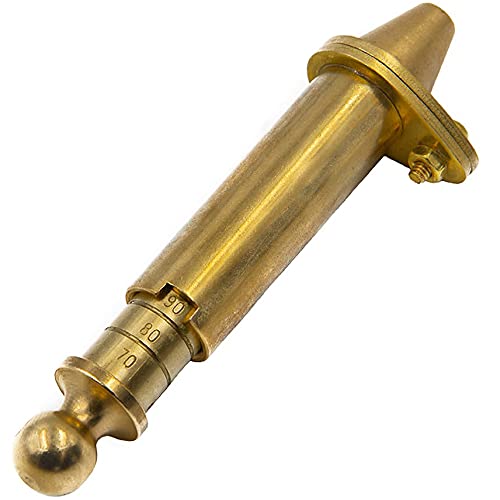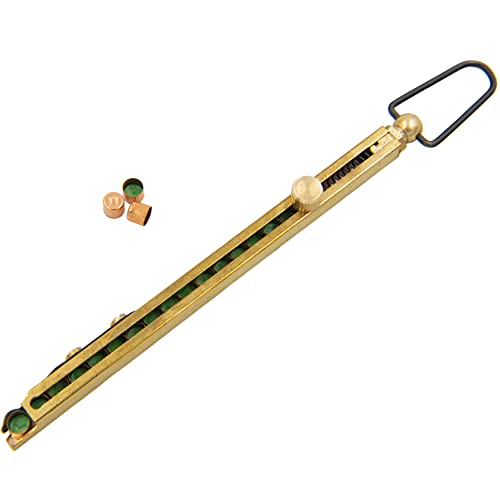I will have to agree with you on that ,I have tried everything you have,and pillow ticking is by far the best I have used.I use it on the guns that I have built .32,.45,.50,.54,and have also used it on originals that I have.The only variations is that I use from .012,.o15,and .o18,depending on what gun I'm shooting at the time.
-
Friends, our 2nd Amendment rights are always under attack and the NRA has been a constant for decades in helping fight that fight.
We have partnered with the NRA to offer you a discount on membership and Muzzleloading Forum gets a small percentage too of each membership, so you are supporting both the NRA and us.
Use this link to sign up please; https://membership.nra.org/recruiters/join/XR045103
You are using an out of date browser. It may not display this or other websites correctly.
You should upgrade or use an alternative browser.
You should upgrade or use an alternative browser.
Patching materials
- Thread starter albert
- Start date

Help Support Muzzleloading Forum:
This site may earn a commission from merchant affiliate
links, including eBay, Amazon, and others.
What is the best patch?
I used pillow ticking, linens, denium, silk, cotton blends, wool, comericaly made patches and even old tee-shirts.

I tried them all, but I keep coming back to PILLOW TICKING...

What do you think is the best, all around patching meterial?
I used pillow ticking, linens, denium, silk, cotton blends, wool, comericaly made patches and even old tee-shirts.

I tried them all, but I keep coming back to PILLOW TICKING...

What do you think is the best, all around patching meterial?
Okay, How do you measure the thickness of a patch? By varying the amount of squeeze I put on the patch with the micrometer, I can get quite a variation (several thousandths, anyway) in the thickness measured. I heard somewhere that you squeeze it until the point where you just can't pull out the patch. Also, with pillow ticking, do you measure it before or after washing out the sizing? Or do you even wash out the sizing?Any ideas?
quote:Originally posted by tommy b:
Okay, How do you measure the thickness of a patch with the micrometer?With 13 years in the extrusion industry behind me I had to use micrometers every working day.
You measure thickness by squeezing just enough to where the micrometer will slide on the patch (or whatever you're measuring) with some resistance.
You can torque (compress) it down more to give a "FASLE" measurment, but this could damage the tool and, (in the industry) produce scrap.
I buy my ticking in bulk at fabric shops, I take my micrometers into the store with me, you should see the look on the ladies faces when I start measuring the thickness.


Also, I always wash out my sizing.
Okay, How do you measure the thickness of a patch with the micrometer?With 13 years in the extrusion industry behind me I had to use micrometers every working day.
You measure thickness by squeezing just enough to where the micrometer will slide on the patch (or whatever you're measuring) with some resistance.
You can torque (compress) it down more to give a "FASLE" measurment, but this could damage the tool and, (in the industry) produce scrap.
I buy my ticking in bulk at fabric shops, I take my micrometers into the store with me, you should see the look on the ladies faces when I start measuring the thickness.


Also, I always wash out my sizing.
Guest
I think tg has got the right idea. Good ol' pocket drill (pocket material from dress pants or slacks) seems to work as good as any. Been usin' this stuff since '76 and it's cheap. Pants at yard sales are really inexpensive.



$15.99
Muzzle-Loaders Wooden Black Powder Muzzleloader Bullet and Sabot Starter - 6 Jags
IX Properties

$44.99
$53.61
Traditions Performance Firearms Muzzleloader Flintlock Shooter’s Kit
Al's Sporting Goods
I also use pillow ticking I have seen groups size shrink to half or more by using consistent patching material. tried the old tee shirt and denim routine but it is rare that all thickness are consistent from one piece to another but hey if it works for ya do it
weasel
weasel
quote:I take my micrometers into the store with me, you should see the look on the ladies faces when I start measuring the thickness. Musketman, you took the words right out of my mouth.
When asked "what are you going to do with it?" I couldn't just say "I'm going to patch my balls with it" so I just say "I use it in my hobby"


When asked "what are you going to do with it?" I couldn't just say "I'm going to patch my balls with it" so I just say "I use it in my hobby"


MM,
How do you add those quotes to your reply? In reference to your reply above, I took my mikes and measured a washed pillow ticking patch.To tighten it until there is a slight drag against the mike is pretty subjective. It just touched a little bit at .020". And it dragged harder and harder until I got to .015", at which point it wouldn't move. I guess I could take the average and say it is .017" or .018" thick. It sure is a lot easier to mike metal because there isn't such a range between just touching and tight.
How do you add those quotes to your reply? In reference to your reply above, I took my mikes and measured a washed pillow ticking patch.To tighten it until there is a slight drag against the mike is pretty subjective. It just touched a little bit at .020". And it dragged harder and harder until I got to .015", at which point it wouldn't move. I guess I could take the average and say it is .017" or .018" thick. It sure is a lot easier to mike metal because there isn't such a range between just touching and tight.
quote:Originally posted by tommy b:
It sure is a lot easier to mike metal because there isn't such a range between just touching and tight. It takes a light touch, I had to measure sponge and foam rubber...
 The patch material is harder than what I was use too.
The patch material is harder than what I was use too.
It is allways a good idea to gather a few of your fired (used) patches and check it they and the patch lube are doing their jobs right.
Making sure they are not burnt through or ripping.
The patch should be blackend a bit on the powder side, with streaks where the groves were touching the patch. (for the new people: there will be no streaks on patches used in smoothbores)
Tommy B, I sent you an instant message to answer your question...

It sure is a lot easier to mike metal because there isn't such a range between just touching and tight. It takes a light touch, I had to measure sponge and foam rubber...

It is allways a good idea to gather a few of your fired (used) patches and check it they and the patch lube are doing their jobs right.
Making sure they are not burnt through or ripping.
The patch should be blackend a bit on the powder side, with streaks where the groves were touching the patch. (for the new people: there will be no streaks on patches used in smoothbores)
Tommy B, I sent you an instant message to answer your question...

- Joined
- Aug 25, 2003
- Messages
- 6,495
- Reaction score
- 1,426
Acually you have to crank down pretty hard to get an accurate measurement. A compressed measurement is what you need as that is the way the patch is when loaded.
i think the impoetant thing to do is to find a thickness that works well for your gun then mike it then when looking for more of the same use the same pressure/method to get the same thickness material, one person may measure .003 different than another.I snug down pretty good and most material the "stops" at .020 will push down to .017 or more, some would stop and call it .020 I would call it .017 the main thing is to know what you need and always do things the same.I have measured some .017 patching that has been lubed in a loading block for a long time that read .014.
SteveAnderson
32 Cal.
- Joined
- Nov 5, 2003
- Messages
- 15
- Reaction score
- 0
You do have to crank the mic down pretty good. tg is right. It doesn't matter if your measurements differ from someone elses, just make sure they are consistant for you. And don't be afraid of telling them what you are doing at the store. I found that in about 10 minutes I was knee deep in bolts of denim with 6 pretty ladies all wanting to try the micrometer. When you do find that perfect weight of patch, be sure to buy enough of it. It might not be there when you run out.
I don,t know the "right" procedure to measure the patch thickness. I just found a patch that worked well for me, checked for thickness squeased it so it would just slide with a little drag. Then went to the fabic store and checked the pillow ticking the same way. When I found a bolt that checked the same I bought enough to last me for years.
They had the stuff in blue stripe, green stipe and a kind of pink. When the lady wanted to know what color I needed and what I was going to use it for. I told her it didn't matter I was going to shoot it through a gun,for some reason she just walked away from me.

They had the stuff in blue stripe, green stipe and a kind of pink. When the lady wanted to know what color I needed and what I was going to use it for. I told her it didn't matter I was going to shoot it through a gun,for some reason she just walked away from me.

quote:Originally posted by No Powder:
They had the stuff in blue stripe, green stipe and a kind of pink.Blue patches for boys, pink patches for girls.

Maybe they can have a red/green patch for hunting around christmas time...
They had the stuff in blue stripe, green stipe and a kind of pink.Blue patches for boys, pink patches for girls.

Maybe they can have a red/green patch for hunting around christmas time...
I think this is a topic that we could analyze to death. But tg is right on. The main point is no matter how much squeeze you apply, Be consistent when measuring different samples. After all, you're looking for the right patch for your gun. I just wanted to see how other folks did it. Thanks all for the great responses. I'm sure learning a lot from this forum.
Similar threads
- Replies
- 50
- Views
- 3K



















